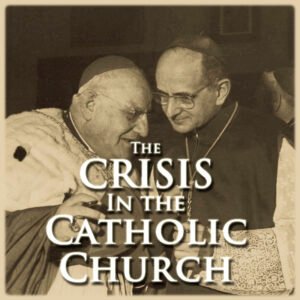The Second Vatican Council, as is commonly known, proclaimed and enacted 16 documents, which are divided thus:
- 4 Constitutions
- 3 Declarations
- 9 Decrees.
The difference between Constitutions, declarations, and decrees is the following:
Constitutions:
A Constitution has the highest level of authority. When enacted by the Pope, an Apostolic Constitution usually contains ecclesiastical law, permanently promulgated by the Pope, to bind all or a part of Christendom. When enacted by the Councils, Constitutions would also have binding power over the faithful, if they are approved by a true Pope, and usually, they would receive the name “Dogmatic Constitutions”, since they would touch upon Dogma.
The fact that the “Constitutions” of Vatican Council were not supposed to be Dogmatic, but only “Pastoral” poses a problem already, since the name given to them implies that they were supposed to be binding upon all the faithful.
A more serious issue arises, when we see that these documents (which would supposedly enjoy infallibility), openly contradict previous truly infallible teachings from the Church. Particularly Lumen Gentium, Sacrosanctum Concilium, and Gaudium et Spes.
Decrees and Declarations:
Sometimes, the name of Decree is indistinctly given to Constitutions and other documents enacted by the Councils. In the Vatican II mindset, it seems that the Decrees and Declarations were supposed to express the teaching of the Church in topics that were until then confused or not defined. Although some authors claimed that the decrees have a higher authority than the declarations, the truth is that the Vatican itself puts declarations before the decrees. At the end of the day the difference between them is negligible.
In this set of documents we find the same kind of problems as in the Constitutions. the Decrees: Unitatis Redintegratio, Orientalium Ecclesiarum, Ad Gentes, Nostra Aetate, and the declaration Dignitatis Humanae all present doctrines which the Church had always considered erroneous.
“We as Catholics are bound to try to educate ourselves in what is the proper and true Catholic Faith, we are required to find and hold the perennial Dogmas of the Church, and her water-clear morality.”
What then should we conclude from these contradictions?
I invite the reader to look further into the information that faithful catholic clergy provides on this topic. The truth is that the Second Vatican Council unleashed an “October revolution” in the Catholic Church. An upheaval of all the traditions, dogmas and morals which the Church of Christ had held for hundreds of years.
And as a matter of fact, the Catholic Church has not changed. Throughout these moments of destruction and apostasy, there remained Catholic clergy who were faithful to the teachings of Christ and the Traditions of the Church. With them, the Church remains unspotted, even if, given the difficult times we live in, disagreements or human dissension might arise.
We as Catholics are bound to try to educate ourselves in what is the proper and true Catholic Faith, we are required to find and hold the perennial Dogmas of the Church, and her water-clear morality. This duty is incumbent on all of us, that we might not be numbered among those who “perish because they receive not the love of the truth” (2 Thes. 2;10.) To learn more about the true teachings of the Catholic Faith, check out our other sections on The Catholic Wire.
In the following articles we will cover each one of these documents, pointing out their goal, the justification that was given for them, and the doctrinal issues that arise with each one of them.
Constitutions
- Dei Verbum (Dogmatic constitution on Divine Revelation)
- Lumen Gentium (Dogmatic Constitution on the Church)
- Sacrosanctum Concilium (Constitution on the Sacred Liturgy)
- Gaudium et Spes (Pastoral Constitution on the Church in the Modern World)
Declarations
- Gravissimum Educationis (Declaration on Christian Education)
- Nostra Aetate (Declaration on the Relationship of the Church to Non-Christian Religions)
- Dignitatis Humanae (Declaration on Religious Freedom)
Decrees
- Ad Gentes (Decree on the Church’s Missionary Activity)
- Presbyterorum Ordinis (Decree on the Ministry and Life of the Priests)
- Apostolicam Actuositatem (Decree on the Apostolate of the Laity)
- Optatam Totius (Decree on Priestly Training)
- Perfectae Caritatis (Decree on the Adaptation and Renewal of Religious Life)
- Christus Dominus (Decree Concerning the Pastoral Office of Bishops)
- Unitatis Redintegratio (Decree on Ecumenism)
- Orientalium Ecclesiarum (Decree on the Catholic Churches of the Eastern Rite)
- Inter Mirifica (Decree on the Media of Social Communications)


